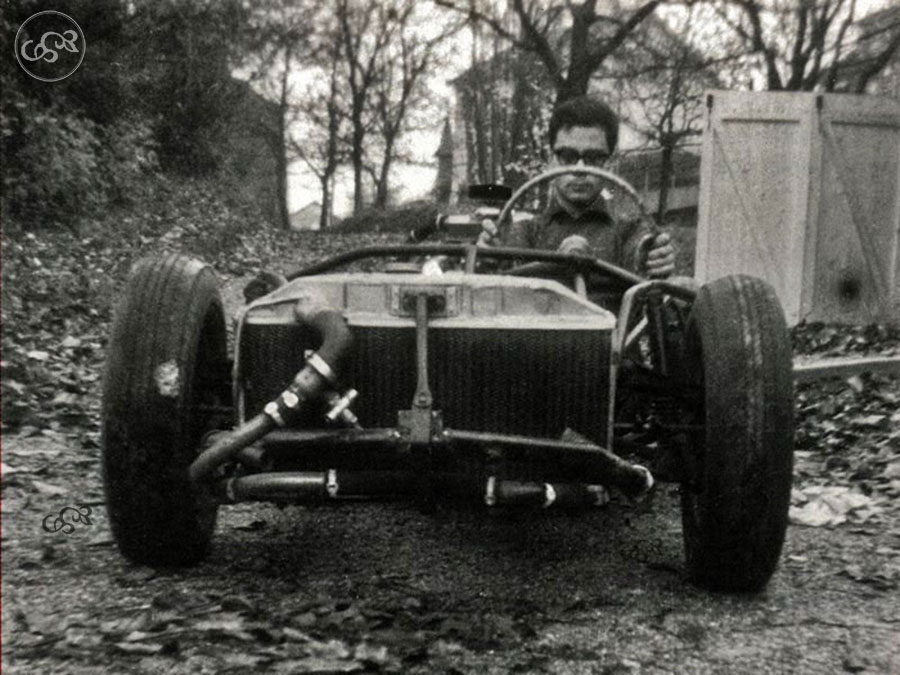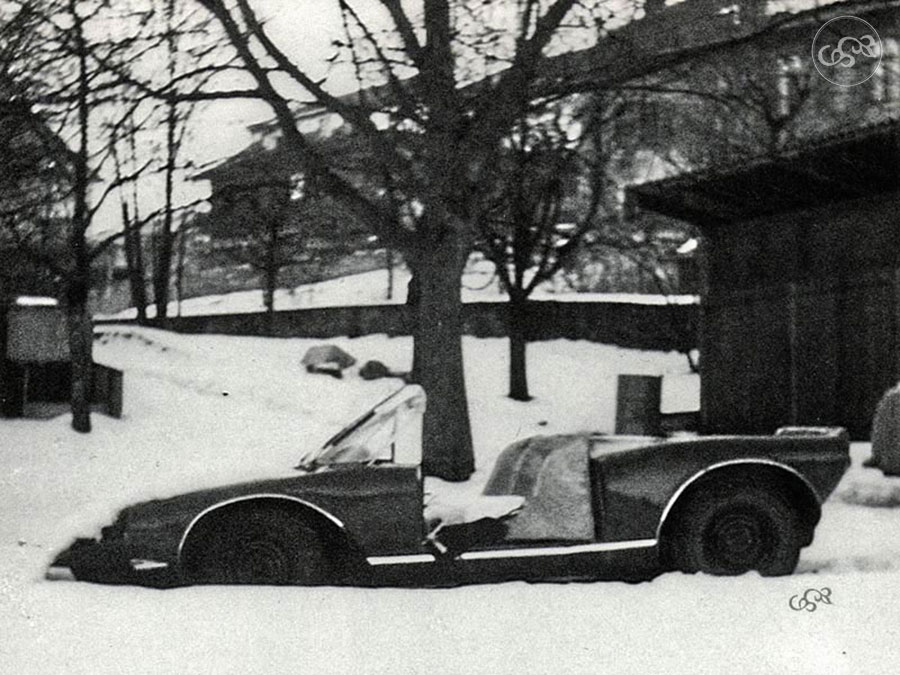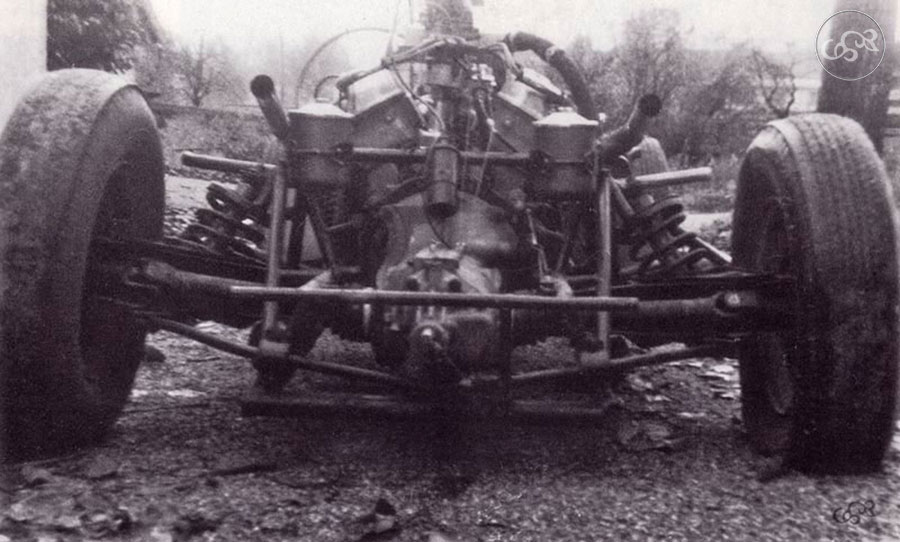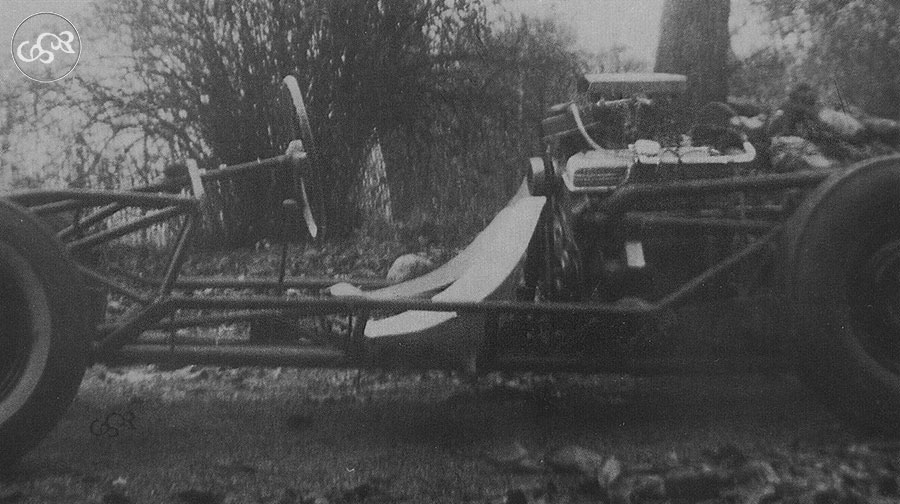First prototype (1959)
Franco Sbarro, born in Italy, moved to Neufchatel, Switzerland, in 1957. Two years later, while working on his own, mainly with the German manufacturer Borgward, he built his first prototype, shown here as a bare chassis (with Franco Sbarro at the wheel), then with a rough body. This vehicle marked the start of the 20-year-old Sbarro's career as a manufacturer.

Clumsy beginnings
This tubular chassis is powered by a mid-mounted 2-liter Lancia V6 engine mated to a Volkswagen gearbox. The engine was chosen for its nobility. This rolling chassis was presented by Sbarro at the Lignières hillclimb. First bodied with parts borrowed from a Jovet-Javelin, Sbarro then produced a polyester and fiberglass body, without a mold, by stretching strips of fiber (laizes) over a round wire skeleton. The result was rather disappointing, so he made a mold from parts taken from a Berkeley. The mold was then reworked to obtain the desired curves. Once again, and by Franco Sbarro's own admission, the result was not a happy one! We had to wait until 1965 to see a more elaborate Sbarro, the Filipinetti coupé.



In brief
1- First real car built by Franco Sbarro
2- First use of fiberglass
3- It doesn't always work the first time: the bodywork wasn't right.